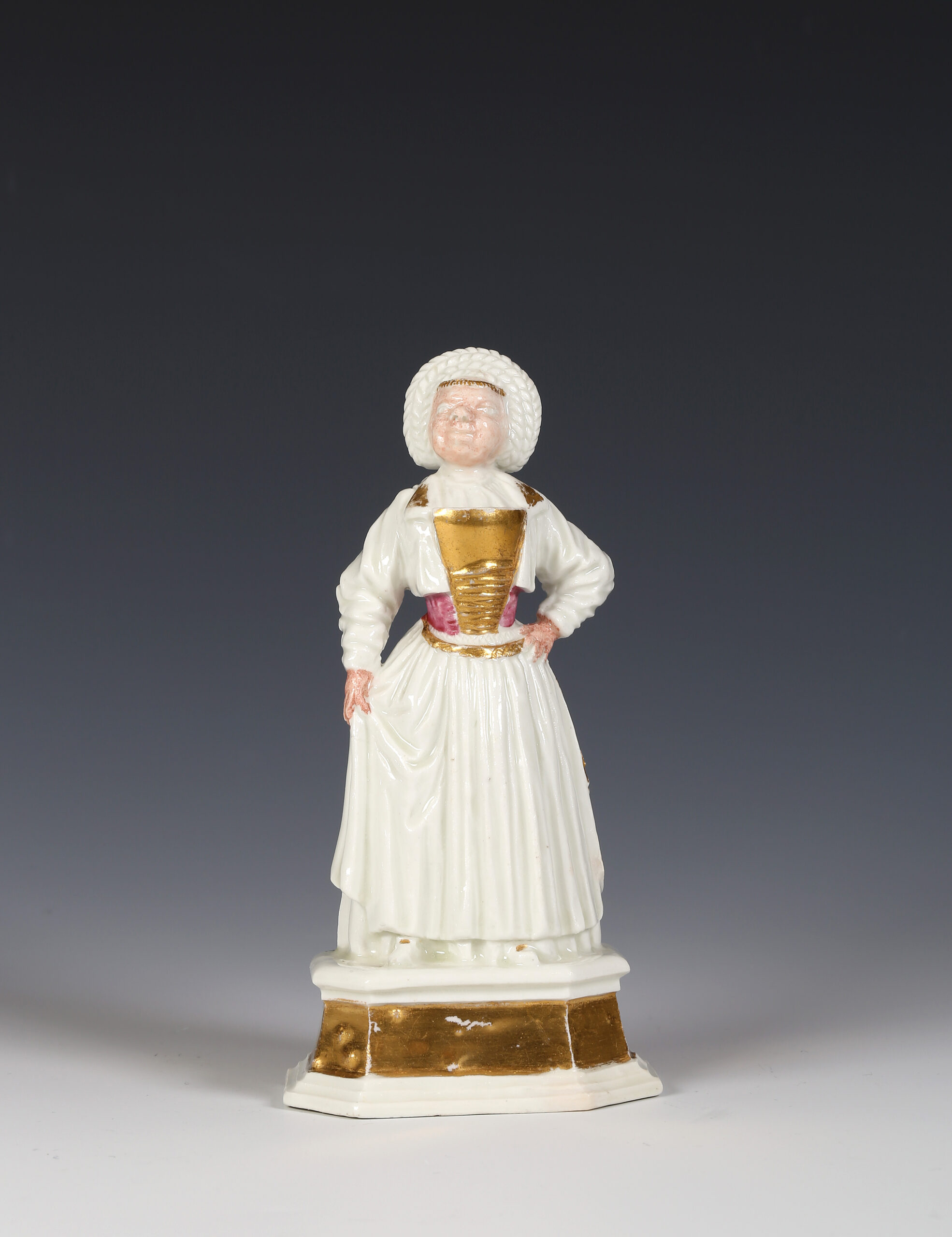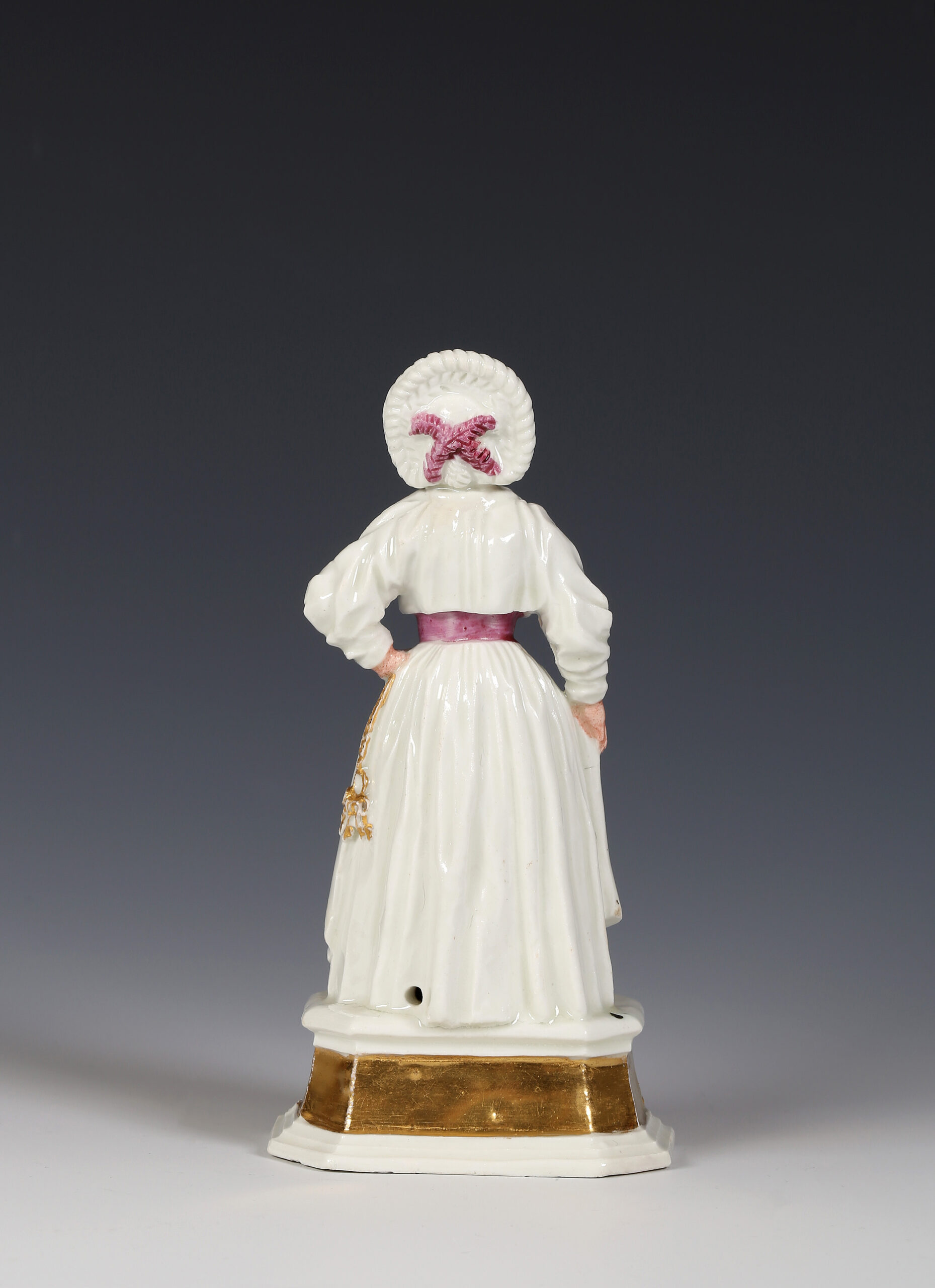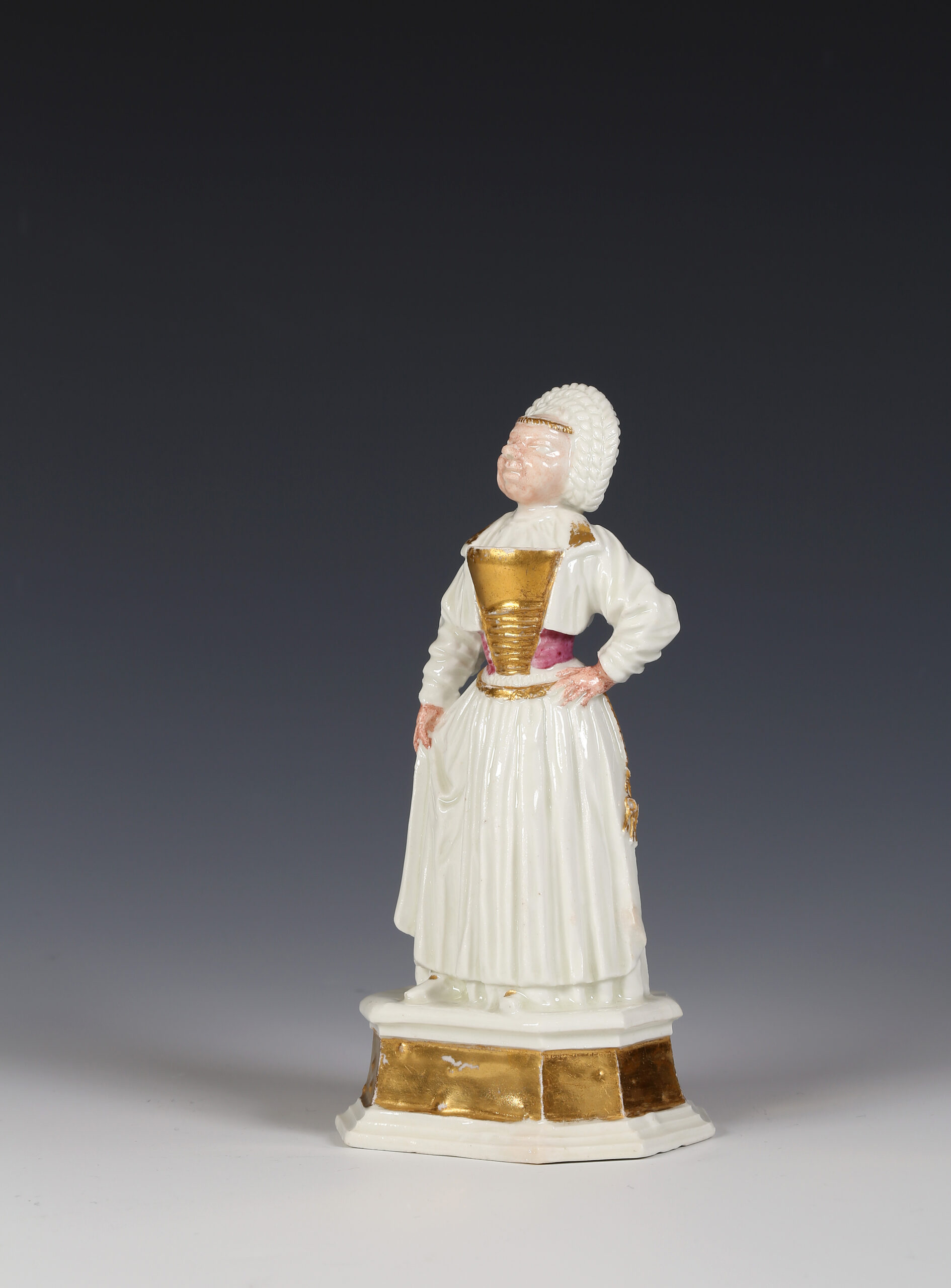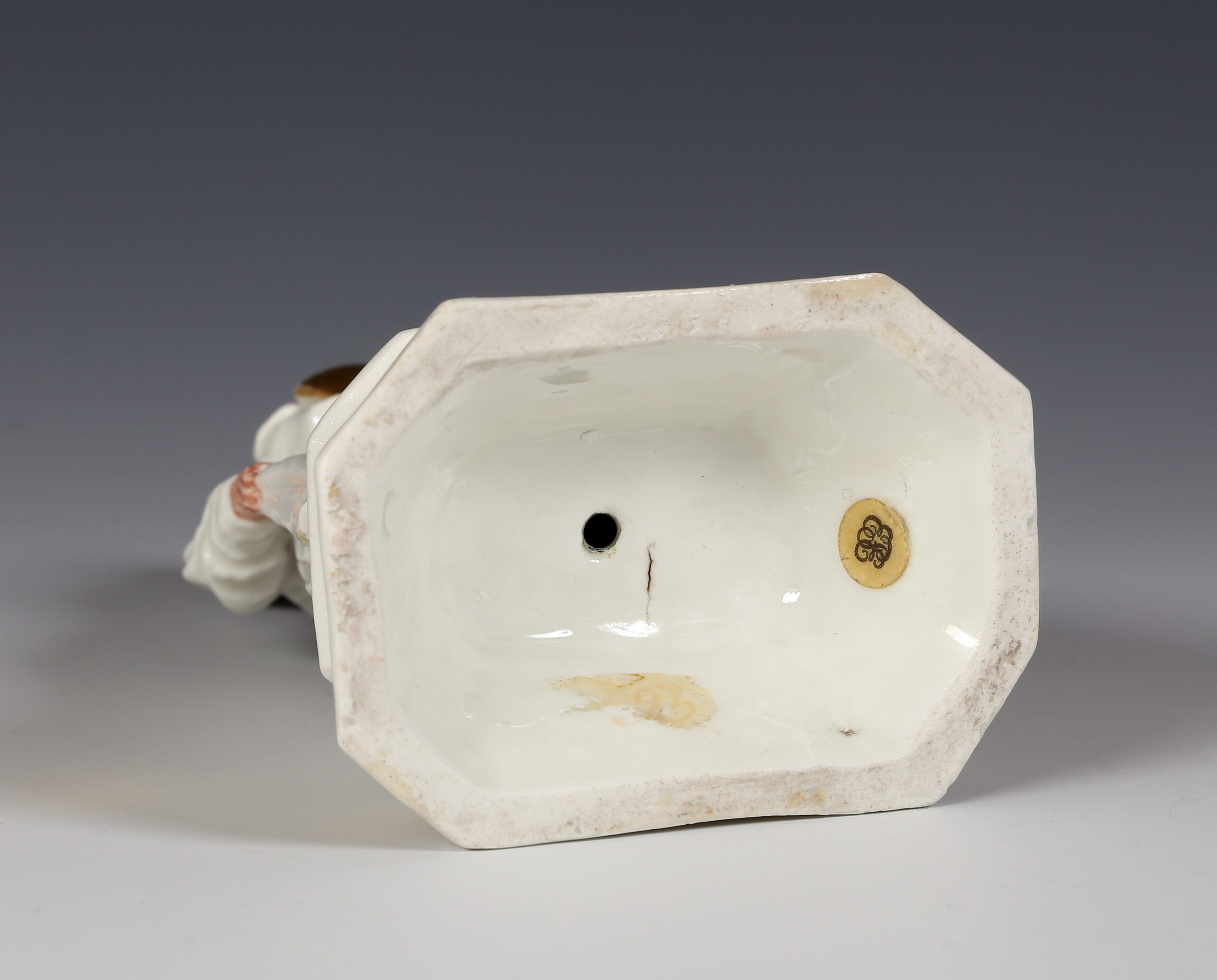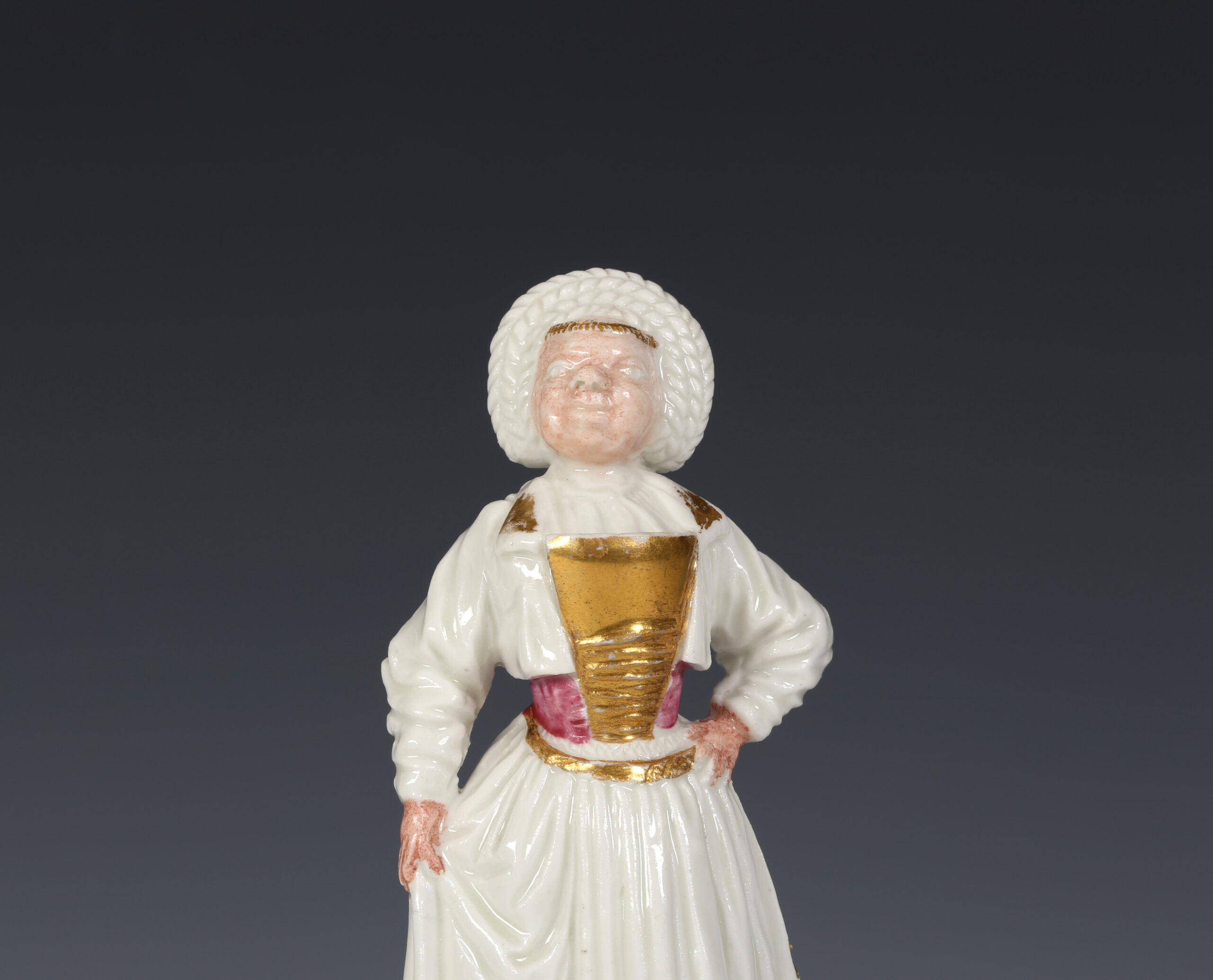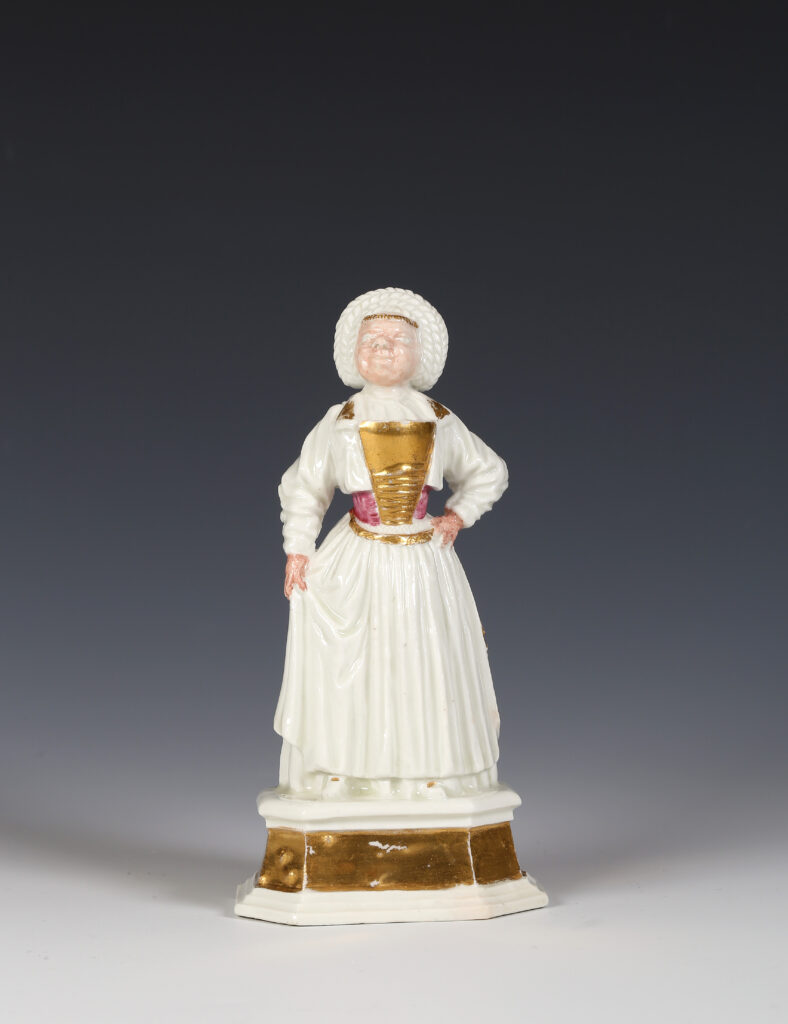

H. (Tim) Clarke first identified this apparently unique figure as being derived from an engraving of the Nürnbergische Bäurin from Die Neu Eröffnete Welt-Galleria, published in Nuremberg in 1703, and explained the curious transformation.
The Welt-Galleria was a typical costume book of its time comprising a series of a hundred engravings issued by Christoph Weigel (1654-1726) after designs by the Dutchman Caspar Luyken. Clarke established that nearly half of these images had been used by Meissen as sources for enamel decoration or for figure models in some form or another. Many of the figure models are peculiar for the manner in which that they have been foreshortened and transformed into figures of dwarfs, a genre popular in court culture at the time. Clarke wittily christened the modeller ‘The Procrustes Master’ after the legendary ancient Greek bandit who attacked people by stretching them or cutting off their legs, so as to force them to fit the size of an iron bed. The only known figure that relates directly to ours is a white figure of a dwarf which uses the head of our figure on a much foreshortened body.[1]

Dresden, Porzellansammlung (Inv.-Nr. P.E. 3784 – acquired from the Spitzner collection in 1890)
T. H. Clarke argues for a date of around 1725 for our figure and the other related dwarfs and figures of different nationalities, basing this on a report of 15 January 1725 which talks of “The factor Mr Chladni has sent 161 plaster moulds of all kinds of nations and other figures to the manufacturer, which he received from a certain Augsburger on the 9th. They are to be used immediately and moulds taken from them”.[2] However the decoration of many of these figures seems much earlier, some even incorporate cold decoration which was only used on small items in the earliest days of the factory[3], and there is no sign of the wide palette of colours that came with the arrival of Johann Gregorius Höroldt, in 1720.
Our figure is decorated in just gold, purple around her bodice and with flesh tones to her face and hands. These colours are consistent with the early palette of Georg Funke. Claus Boltz published the ‘Emaille-farbenverbrauch Georg Funckes 1713 bis 1719’ which lists the enamel colours that he purchased, and their cost.[4] He bought purple, blue, green and yellow each year from 1713, deep purple/puce from 1717 and black and red from 1718.
Condition:
Some wear to gilding
Provenance:
Reported to have been found in Venice in 1966 and exhibited in Rome at the ‘Mostra Nazionale dell’ Antiquariato in May 1966
Pauls-Eisenbeiss Collection, Basel
Sold from the above by Christie’s Geneva, 12 November 1976, lot 211
Literature:
Strauss 1966
K. Strauss, ’Zwei unbekannte Meissner Porzellanfiguren’, Weltkunst, 1 July, 1966, fig. 1, p. 629
Pauls-Eisenbeiss 1972
E. Pauls-Eisenbeiss, German Porcelain of the 18th Century, vol. I (1972), pp. 70-71, Titled ‘The Strict Housekeeper’
Clarke 1990
T.H. Clarke, Die Neu Eröffnete Welt-Galleria, Nürnberg 1703, als Stichvorlage für sogeenannte Callot-Zwerge, Keramos 127 (1990)
[1] This figure has been mis-identified as the dwarf ‘Der Zwerg Ursula Schleglin’, from the engraving published in Il Callotto resuscitato. oder Neu eingerichtes Zwerchen-Cabinet’, in Augsburg by Martin Engelbrecht around 1715.
[2] Clarke 1990, p. 24. Clarke cites Karl Berling but notes that Berling did not give a source. “Sind durch den factor Herrn Chladni 161 stück Gips Formen von allerhand Nationen und andern Figuren, die er von einem gewissen Augspurger erhalten den 9. Hujus anher zur Manufactor übersendet worden. Welche sofort in Arbeit genommen, und daraus ausgeformet werden sollen“
[3] For example the figure of a dwarf of a young Indian woman, illustrated Clarke 1990, fig. 17 & 18
[4] Boltz 2000, p. 143.
SOLD

